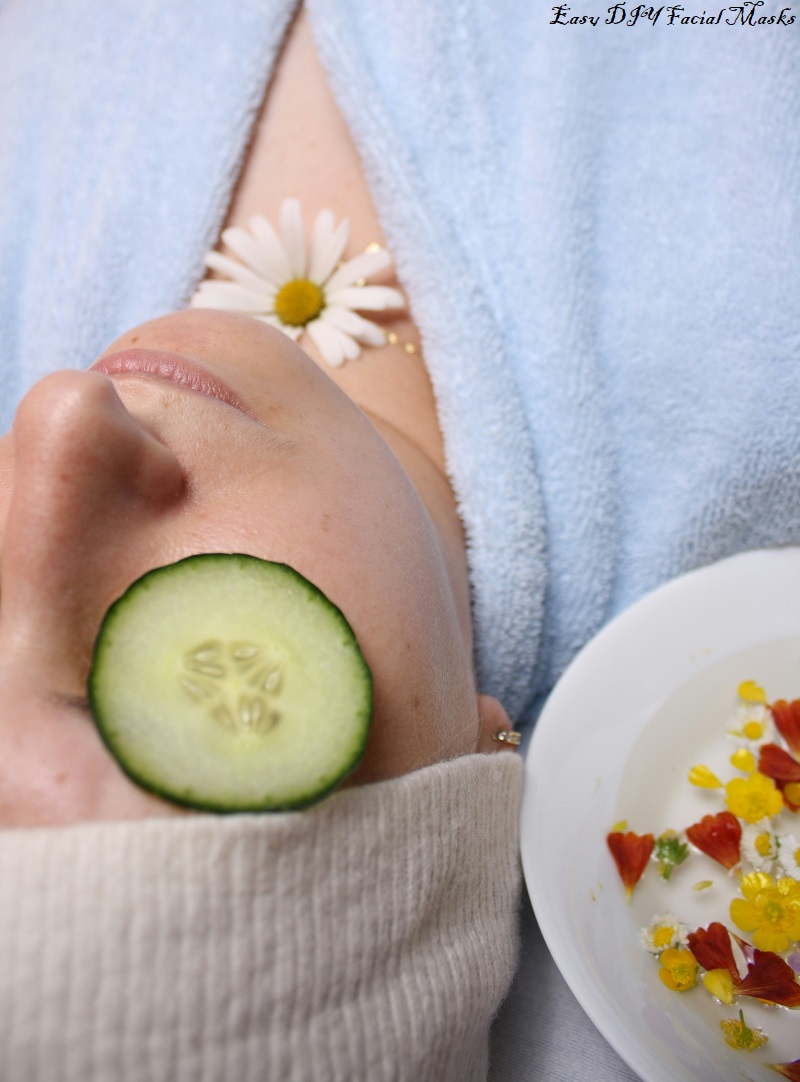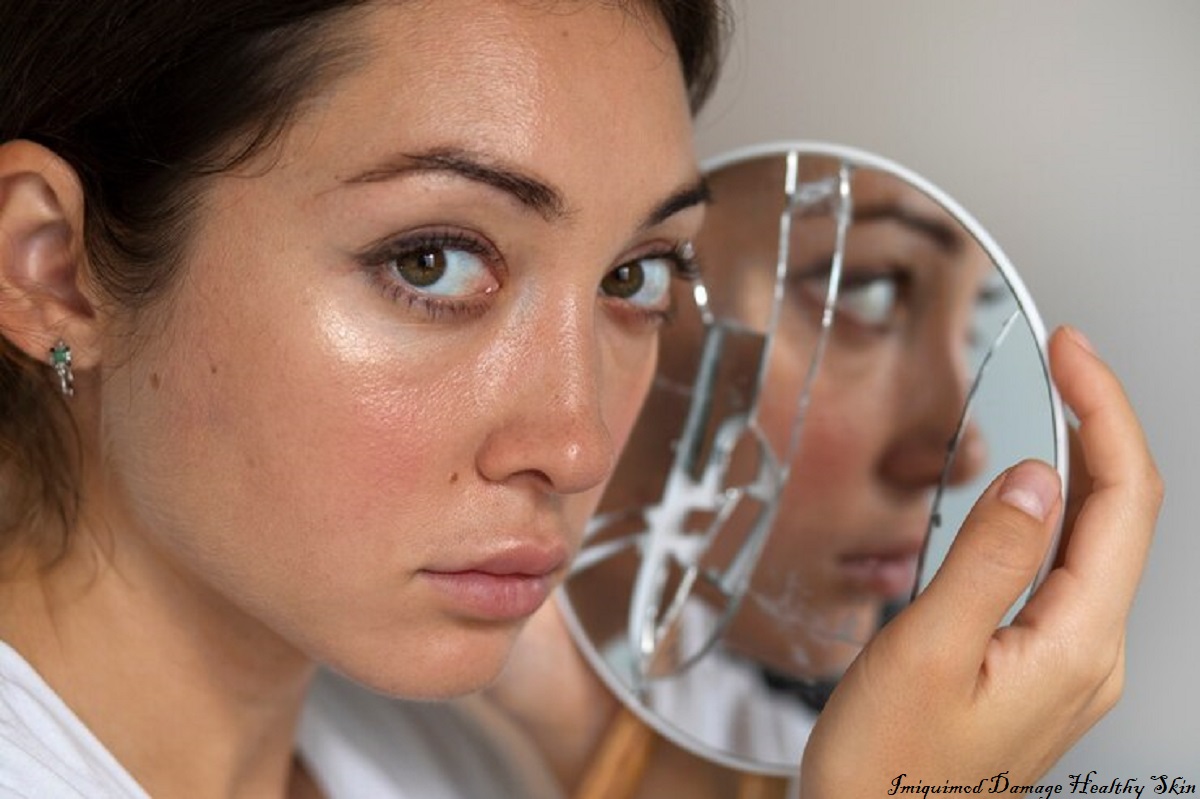Skin
Best Lightweight Foundation For Summer

Summer is a season for lounging in the sun, visiting beaches, and engaging in outdoor pursuits. However, maintaining your makeup without looking heavy or cakey becomes more difficult when the temperature rises. Best Lightweight foundation can help in this situation. They provide coverage without clogging pores, keeping you looking natural and fresh all day. This post will discuss the top lightweight foundations for summer, their salient characteristics, and application advice for optimal outcomes.
Why Choose a Lightweight Foundation?
It’s all about the lightweight foundations, especially in the summer heat. Without melting off your skin or clogging your pores, they offer the ideal amount of coverage. Here are some reasons to think about using a lighter mixture instead:
Breathability: Lightweight foundations let your skin breathe, which lowers the chance of breakouts. This is in contrast to heavier foundations.
Comfort: They are more pleasant to the skin, particularly in warm, muggy weather.
Natural Finish: This foundation’s more natural appearance makes it ideal for the “no-makeup” cosmetics movement.
Key Features to Look for in a Summer Foundation
Look for these crucial characteristics in a summertime foundation before selecting one:
SPF Protection: Use a foundation with SPF to protect your skin from damaging UV radiation.
Long-Lasting Formula: Choose foundations that maintain their shape throughout the heat.
Oil-Free and Non-Comedogenic: Use a solution that won’t clog your pores to avoid breakouts.
Breathable Texture: Make sure your complexion is dewy and light.
Top Lightweight Foundations for Summer
H2O Tint by Tarte
Water-based Tarte H2O Tint foundation provides a moisturizing, dewy look. It is ideal for people who have dry skin or who want to stay hydrated in the summer.
NARS Pure Radiant Tinted Moisturizer
In addition to offering a beautiful look, this tinted moisturizer has SPF 30. It’s oil-free, lightweight, and perfect for people who want a natural glow.
L’Oréal Paris True Match Lumi Cushion Foundation
The cushion foundation from L’Oréal provides buildable coverage and a bright finish. It is convenient to carry for touch-ups while on the road thanks to the small packing.
Maybelline Dream Fresh BB Cream
Maybelline’s 8-in-1 skin perfector, the BB cream, hydrates and protects your skin with SPF 30 all while offering sheer coverage.

BareMinerals Complexion Rescue Tinted Hydrating Gel Cream
The advantages of a BB cream, CC cream, and tinted moisturizer are combined in one gel cream. With SPF 30, it provides a natural, dewy finish.
How to Apply Lightweight Foundation for a Natural Look
It’s important about technique to get a lightweight foundation to look seamless and natural. This is how you do it:
Prepping Your Skin
Begin by washing and moisturizing your face. To guarantee that your foundation stays in place, use a primer after using a mild moisturizer that is appropriate for your skin type.
Using the Right Tools
Use a damp beauty sponge or stippling brush for a natural-looking finish. These instruments aid in the foundation’s flawless skin-tone integration.
Layering for Buildable Coverage
Start with a light coat of foundation and add more only as necessary. This guarantees that your makeup looks flawless rather than cakey.
Foundation Tips for Oily Skin in Summer
Summertime might be especially difficult if you have oily skin. To keep your foundation appearing new, use these tips:
Choosing the Right Formula
Choose an oil-free, mattifying foundation to reduce shine and stop breakouts.
Setting Techniques
To keep oil at bay, set your makeup with a translucent powder. Pay attention to your T-zone, which is where oil likes to collect.
Midday Touch-Ups
Keep blotting sheets or a compact powder with you for last-minute touch-ups during the day.
Foundation Tips for Dry Skin in Summer
Even in the summer, dry skin requires more moisture. Here’s how you maintain a flawless-looking foundation:
Hydrating Ingredients
For hydrated, plump skin, look for foundations with moisturizing elements like hyaluronic acid.
Priming and Setting
To avoid dryness, use a hydrating primer before foundation and set your look with a hydrating setting spray.
Avoiding Cakiness
To avoid giving your skin a caked-on appearance, don’t use too much powder. If you must, stick to a light dusting.
Foundation Tips for Combination Skin in Summer
Combination complexion calls for a well-rounded strategy. This is how you handle it:
Balancing Oily and Dry Areas
Before applying foundation, use a hydrating primer on dry areas and a mattifying primer on oily areas.
Customizing Your Routine
Combine cosmetics to make different sections of your face seem good. Apply a moisturizing foundation to your cheekbones and a mattifying one to your T-zone, for instance.
Product Recommendations
Think about foundations that address various skin issues, such as IT Cosmetics CC+ Cream.
Additional Summer Makeup Tips
Think about these suggestions to round off your summer style:
Using Lightweight Concealers
Pick a moisturizing, lightweight concealer to cover dark circles and imperfections without seeming cakey.
Choosing the Right Powder
To set your makeup without packing on extra weight, choose a translucent powder that has been finely powdered.
Blush and Bronzer Tips
For a natural, dewy look that goes well with your lightweight foundation, use cream blushes and bronzers.
DIY Lightweight Foundation Options
If you prefer DIY solutions, try these:
Mixing Moisturizer with Foundation
Mix a few drops of your foundation with your go-to moisturizer to make your tinted moisturizer.
Using a Tinted Sunscreen
Use a tinted sunscreen that provides both protection and coverage for a no-makeup look.
Common Mistakes to Avoid
Steer clear of these typical mistakes when applying light foundation:
Applying Too Much Product
With lightweight foundations, less really is more. Use sparingly and increase coverage as necessary.
Skipping SPF
To shield your skin from UV rays, always wear a foundation with an SPF of at least 15 or apply sunscreen underneath.
Ignoring Skin Type
Choose a foundation that suits your skin type to avoid issues like breakouts or dryness.
How to Transition from Day to Night Makeup in Summer
Transform your daytime look into a glamorous evening look with these tips:
Adding a Bit of Glam
Add a touch of shimmer to your eyes or a bold lip color to elevate your look.
Refreshing Your Base
Use a hydrating mist or blotting paper to refresh your foundation without removing it.
Evening Makeup Essentials
Carry essentials like a highlighter, mascara, and lipstick for quick touch-ups.
Recommended Lightweight Foundation Tools
The right tools can make all the difference. Here’s what to use:
Brushes vs. Sponges
A beauty sponge offers a natural finish, while a brush can provide more coverage. Choose based on your preference.
Blending Techniques
Blend the foundation using dabbing motions for a seamless look. Avoid dragging or rubbing, which can disrupt the finish.
User Reviews and Testimonials
What actual people are saying about their preferred light-weight foundations is as follows:
User A: “My go-to summertime moisturizer is NARS Pure Radiant Tinted Moisturizer.” It’s so light and leaves my skin glowing.”
User B: “BareMinerals Complexion Rescue is amazing. I look fresh all day long, and it’s ideal for my dry skin.
Expert Opinion: “I suggest hydrating and SPF-containing foundations for the summer.” Good options include Tarte’s H2O Tint and Maybelline’s Dream Fresh BB Cream. – Artist in makeup
Conclusion
It doesn’t have to be difficult to find the ideal summertime lightweight foundation. You may obtain a perfect, natural-looking look that lasts all day with the appropriate product and application techniques. To get the most out of your summer foundation, keep in mind your skin type, search for important characteristics like SPF, and steer clear of frequent blunders. Now go on and confidently embrace the sun!
FAQs
1. Can I wear a lightweight foundation if I have oily skin?
Of course! Seek for mattifying, oil-free foundations that reduce shine and stop breakouts.
2. How do I make my lightweight foundation last longer in the heat?
Apply a primer, use translucent powder to set, and keep blotting sheets on hand in case of touch-ups.
3. Can I mix my foundation with sunscreen?
Yes, you may apply sunscreen and makeup together or use a foundation with SPF already included for extra protection.
4. Are tinted moisturizers a good alternative to foundation in summer?
Yes, tinted moisturizers are perfect for a natural summertime look since they offer light coverage and nourishment.
5. How can I avoid cakiness with a lightweight foundation?
Use a moist sponge to mix, apply in small layers, and don’t use too much powder.
Skin
Simple and Effective Skincare Routine for Sensitive Skin

Sensitive skin can feel like a constant balancing act. One wrong product, and you’re dealing with redness, irritation, or a breakout that can take days or weeks to calm down. But caring for sensitive skin doesn’t have to be overwhelming. Sticking to a simple and consistent skincare routine can avoid many common irritants and maintain a healthy, radiant complexion.
This guide will walk you through a simple yet effective skincare routine tailored specifically for sensitive skin.
What is Sensitive Skin?
Sensitive skin refers to a skin type that is more reactive than normal skin. It can be triggered by various factors such as environmental changes, harsh skincare ingredients, stress, or even diet. People with sensitive skin often experience symptoms like redness, dryness, itching, or a burning sensation.
Common Triggers of Skin Sensitivity
- Harsh chemicals in skincare products, like alcohol, sulfates, or synthetic fragrances
- Extreme weather conditions, such as wind, cold, or excessive heat
- Stress or lack of sleep
- Dietary triggers, such as spicy foods or excessive caffeine
Why a Simple Skincare Routine is Essential for Sensitive Skin

When it comes to sensitive skin, less is more. Overloading your skin with a myriad of products can cause more harm than good. By keeping your skincare routine simple, you minimize the risk of irritating your skin.
The Benefits of a Minimalist Approach
- Fewer reactions: Fewer products mean fewer chances of encountering ingredients that might irritate.
- Easier to manage: You can easily pinpoint what’s working and what’s not.
- Strengthened skin barrier: With fewer products, your skin can heal and repair its natural protective barrier more effectively.
Understanding Your Skin Type
Before diving into a new skincare routine, it’s important to confirm if you truly have sensitive skin.
How to Identify Sensitive Skin
Sensitive skin is often characterized by the following:
- Tightness or discomfort after washing your face
- Redness and flushing after using certain products
- Frequent breakouts or reactions to new skincare products
- Irritation in response to environmental changes, like sun or wind
If you’re still unsure, you might also want to consult with a dermatologist to confirm your skin type.
Essential Steps in a Skincare Routine for Sensitive Skin
A simple routine can be broken down into four essential steps: cleansing, moisturizing, protecting, and treating. Let’s look at each of these steps in detail.
Step 1: Gentle Cleanser
Cleansing is the foundation of any skincare routine, but sensitive skin requires extra care. Choose a gentle, sulfate-free cleanser that doesn’t strip away your skin’s natural oils. Look for products labeled “hypoallergenic” or “for sensitive skin.”
Recommended Ingredients
- Aloe vera: Soothes inflammation and redness
- Glycerin: A natural humectant that hydrates the skin
- Oats: Help calm irritation and provide gentle exfoliation
How Often to Cleanse
Cleansing once or twice a day (morning and night) is generally sufficient. Over-cleansing can disrupt your skin’s barrier and irritate it.
Step 2: Hydrating Toner or Mist (Optional)
If your skin feels tight after cleansing, a hydrating toner or mist can offer relief. This step is optional but can add an extra layer of moisture to your routine. Just be sure to pick alcohol-free options with soothing ingredients.
Best Ingredients for Hydration

- Rose water: Known for its anti-inflammatory properties
- Chamomile: Helps reduce redness
- Hyaluronic acid: Boosts moisture without irritation
Step 3: Moisturizer for Sensitive Skin
Moisturizing is crucial for locking in hydration and protecting your skin. Opt for a lightweight, fragrance-free moisturizer that won’t clog your pores or trigger irritation.
Key Ingredients to Focus On
- Ceramides: Help repair and strengthen the skin’s barrier
- Squalane: A non-irritating oil that provides deep hydration
- Niacinamide: Reduces redness and strengthens skin
Lightweight vs. Rich Moisturizers
If you have oily-sensitive skin, a lightweight gel-based moisturizer is ideal. If your skin is more dry-sensitive, a rich cream can offer the extra moisture your skin needs.
Step 4: Sun Protection
Sensitive skin is particularly vulnerable to UV damage, so applying sunscreen is a non-negotiable step in your routine. Opt for a mineral-based sunscreen (zinc oxide or titanium dioxide) that provides broad-spectrum protection without irritating.
Best Sunscreens for Sensitive Skin
- Zinc oxide: Provides a physical barrier against the sun and is less likely to irritate chemical sunscreens.
- Titanium dioxide: Another great option for gentle sun protection.
Step 5: Targeted Treatments (Serums or Oils)
Once your basic routine is established, you can consider adding a targeted treatment like a serum or oil. However, sensitive skin requires a careful selection of ingredients.
Safe Active Ingredients
- Vitamin C: In a low concentration, it can brighten skin without irritating.
- Hyaluronic Acid: For added hydration without the risk of breakouts.
- Centella Asiatica: A soothing ingredient that helps with redness.
What to Avoid in Skincare for Sensitive Skin
To keep your skin calm, there are several ingredients and practices you should steer clear of.
Common Irritants
- Fragrance: Both synthetic and natural fragrances can be irritating.
- Alcohol: Can dry out and irritate sensitive skin.
- Essential oils: Despite being natural, some can cause allergic reactions or irritation.
The Importance of Patch Testing
Before introducing any new product, always perform a patch test. Apply a small amount of product on a discreet part of your skin (like behind your ear) and wait 24-48 hours to see if any reaction occurs. This simple test can save your skin from a lot of potential harm.
Adapting to Seasonal Changes
Sensitive skin often reacts to changes in weather. In the winter, your skin may need extra moisture, while in the summer, lighter products may suffice.
Summer Routine Adjustments
- Switch to lighter, water-based products
- Increase SPF application
Winter Routine Adjustments
- Opt for richer, cream-based moisturizers
- Consider adding hydrating masks or oils
Diet and Lifestyle Tips for Sensitive Skin

Skincare isn’t just about what you apply topically. Your diet and lifestyle also play a big role.
Foods to Include
- Omega-3 fatty acids (found in fish and flaxseeds): Help reduce inflammation
- Antioxidants (found in berries, green tea, and leafy greens): Protect your skin from environmental stressors
Stress Management
Stress can trigger flare-ups in sensitive skin. Incorporating stress-relief practices like yoga, meditation, or regular exercise can help keep your skin calm.
When to Consult a Dermatologist
If you’re struggling to manage your sensitive skin or you notice persistent redness, rashes, or discomfort, it’s best to consult a dermatologist. They can help you identify any underlying skin conditions that may require treatment, such as rosacea or eczema.
Conclusion
Taking care doesn’t have to be complicated. By sticking to a simple routine of cleansing, moisturizing, and protecting with gentle, non-irritating products, you can keep your skin calm and healthy. Remember, consistency is key, and always be mindful of how your skin reacts to new ingredients or environmental factors.
FAQs
- Can I skip sunscreen if my skin is sensitive to SPF? No, sunscreen is essential for everyone, even those with sensitive skin. Look for mineral-based options that are less likely to irritate.
- How often should I change my skincare routine? Stick to a consistent routine. Only change products when necessary, such as seasonal adjustments or when your skin reacts negatively to a product.
- Are natural or organic products better for sensitive skin? Not necessarily. Some natural ingredients, like essential oils, can still irritate. Always check labels and patch test products.
- Should I exfoliate if I have sensitive skin? Exfoliation should be done sparingly. Opt for gentle, chemical exfoliants like lactic acid and avoid physical scrubs.
- Can stress worsen my sensitive skin? Yes, stress can trigger inflammation and worsen sensitivity. Managing stress can help improve your skin’s condition.
Skin
Quick and Easy DIY Facial Masks

Maintaining healthy, radiant skin requires regular skincare, and using a face mask is one of the finest ways to treat yourself. But when you can make your own, why spend money on pricey store-bought goods? Using natural products that you most likely already have in your home, DIY facial masks are a quick and simple way to meet your skin’s demands.
What Makes a Good Facial Mask?
The components are the key to a successful face mask. Nutrient-dense natural ingredients like honey, yogurt, avocado, and clay help moisturize, cleanse, and brighten your skin. You may make masks that are suited to your skin type and issues by mixing the appropriate ingredients.
Benefits of DIY Facial Masks
Why choose homemade face masks? You have complete control over what appears on your face, and they’re convenient and reasonably priced. Additionally, they don’t include artificial chemicals or preservatives that can irritate delicate skin. Whether you have dry, oily, or acne-prone skin, there is a do-it-yourself remedy for you.
Quick Tips Before You Start
Always conduct a patch test on a small section of your skin prior to using any mask to make sure you won’t experience an adverse response. To enable the chemicals to fully penetrate your skin, thoroughly cleanse it.
DIY Facial Masks for Dry Skin
Honey and Avocado Mask
For dry skin, this moisturizing mask is a godsend. Avocado is full of fatty acids that soften and nourish the skin, while honey is a natural humectant, which means it attracts moisture to the skin.
The recipe is as follows: Mash half an avocado and stir in 1 tablespoon honey. After applying it to your face, wait 15 to 20 minutes. Use lukewarm water to rinse.
Oatmeal and Yogurt Mask
Yogurt contains lactic acid, which gently exfoliates and leaves your skin feeling soft and supple, while oatmeal calms inflamed skin.
To make it: combine two tablespoons of plain yogurt and two tablespoons of oatmeal. After applying evenly to your face, rinse it off after 15 minutes.
DIY Facial Masks for Oily Skin
Clay and Apple Cider Vinegar Mask
Apple cider vinegar balances the pH of the skin, while clay is great at absorbing excess oil.
How to prepare it: Mix one tablespoon of apple cider vinegar with two tablespoons of bentonite or kaolin clay. After applying, rinse off after ten to fifteen minutes.
Egg White and Lemon Mask
Lemon juice regulates the production of oil, while egg whites tighten the skin and minimize the appearance of pores.
Method: Beat one egg white with a few drops of lemon juice. After ten to fifteen minutes, wash the product off your face.
DIY Facial Masks for Acne-Prone Skin
Tea Tree Oil and Aloe Vera Mask
This mask is ideal for acne-prone skin because tea tree oil has strong antibacterial properties and aloe vera reduces irritation.
To prepare it: combine two tablespoons of aloe vera gel with a few drops of tea tree oil. Before washing, apply to the afflicted regions and let them sit for fifteen minutes.
Turmeric and Honey Mask
Turmeric reduces inflammation, and honey combats bacteria. When combined, they brighten the skin and lessen acne.
To prepare it: combine one tablespoon of honey with half a teaspoon of turmeric. After applying, rinse after ten to fifteen minutes.
DIY Facial Masks for Sensitive Skin
Cucumber and Aloe Vera Mask
Aloe vera soothes inflamed skin, and cucumber cools and moisturizes.
To create it: blend two teaspoons of aloe vera gel with half a cucumber. After 15 minutes, apply and rinse off.
Chamomile and Oats Mask
Oats gently exfoliate sensitive skin without irritating it, while chamomile has anti-inflammatory qualities.
How to prepare it: Make a cup of chamomile tea, then combine one tablespoon of ground oats with two tablespoons of the tea. Rinse after ten minutes after application.
DIY Brightening Facial Masks
Papaya and Honey Mask
Honey adds hydration, and papaya’s abundance of enzymes exfoliates and brightens the skin.
To make it: mash a papaya slice and stir in a tablespoon of honey. Rinse off after 10 to 15 minutes of application.
Banana and Turmeric Mask
Turmeric evens out skin tone and minimizes discoloration, while bananas moisturize and nourish.
The recipe is as follows: Mash a banana and stir in half a teaspoon of turmeric. Rinse after applying and wait 15 minutes.

DIY Anti-Aging Facial Masks
Egg White and Honey Mask
Honey adds hydration and egg whites tighten the skin, making this a powerful anti-aging combination.
To make it: whisk together one egg white and one tablespoon of honey. Before washing, apply to your face and let it sit for 15 to 20 minutes.
Green Tea and Yogurt Mask
Yogurt’s lactic acid exfoliates and smoothes fine wrinkles, and green tea’s abundance of antioxidants combats free radicals.
How to make it: Mix two teaspoons of green tea with one spoonful of yogurt after brewing a cup of it and allowing it to cool. Rinse off after 15 minutes of application.
How Often Should You Use DIY Facial Masks?
Depending on your skin type, use these masks one to three times each week for optimal effects. Dry and sensitive skin should only be used once or twice a week, although oily and acne-prone skin may benefit from more frequent use.
Do’s and Don’ts of Using DIY Facial Masks
. Patch-testing new ingredients is a must.
. Avoid using masks for longer than is advised.
. Make sure you utilize fresh ingredients.
. Avoid placing masks too near the eyes.
Storage Tips for DIY Masks
Aloe vera gel and premade masks can be kept in the refrigerator for up to a week, but the majority of DIY masks should be used fresh. Use a clean container at all times.
Conclusion
Making your DIY face masks is a great method to treat your skin without going over budget. You may treat a variety of skin issues in a customized, chemical-free manner by adding these natural, simple-to-make masks to your routine. Keep in mind that the secret to long-lasting success is persistence.
FAQs
- How long do DIY facial masks last?
While some can be kept in the refrigerator for up to a week, the majority should be consumed right away. - Can I mix ingredients for different skin benefits?
Indeed, you may customize your masks by mixing substances that work best for your skin type. - What’s the best mask for glowing skin?
A papaya and honey mask works wonders for skin that is radiant and vibrant. - Are DIY masks safe for all skin types?
In general, yes, however, if you have sensitive skin, always do a patch test. - Can I use these masks daily?
To prevent over-exfoliating or irritating your skin, it is best to apply them one to three times per week.
Skin
Does Imiquimod Damage Healthy Skin?

Imiquimod Damage Healthy Skin: A topical drug called imiquimod is frequently prescribed to treat some skin disorders, including genital warts, superficial basal cell carcinoma, and actinic keratosis. To help the body identify and eliminate aberrant cells, it stimulates the immune system to release cytokines and other immune molecules. Despite its well-established efficacy, there are worries about how it may affect healthy skin, especially in the vicinity of the application site. In addition to discussing what users should know before beginning treatment, this article explores whether imiquimod can harm healthy skin.
How Imiquimod Works
Imiquimod falls under the category of immune response modifiers. Instead of killing aberrant cells directly, it triggers the immune system to do the job. When applied, it promotes the release of cytokines such as tumor necrosis factor-alpha and interferon-alpha. These chemicals encourage inflammation, which aids the immune system’s ability to recognize and eliminate aberrant or malignant cells. It is used to treat diseases like actinic keratosis and some types of skin cancer because of this.
Potential Side Effects of Imiquimod
Because imiquimod works by stimulating an immune response, it’s not uncommon for users to experience side effects in both the treated and surrounding areas. The most common side effects include:
Redness
Swelling
Erosion or ulceration
Scabbing and crusting
Pain or discomfort
Itching
Dryness
These symptoms usually occur within a few days of starting treatment and are an expected part of the immune response. In many cases, they indicate that the medication is working to remove abnormal cells. However, these side effects can sometimes extend to healthy skin, causing concern for users.

Potential Side Effects of Imiquimod
Does Imiquimod Affect Healthy Skin?
When using imiquimod, it’s crucial to understand that the inflammatory response it triggers is not confined to abnormal cells alone. The medication may also cause inflammation in nearby healthy skin, particularly if applied too broadly. This can lead to temporary redness, irritation, and other side effects in areas otherwise unaffected by the underlying condition.
The Impact on Healthy Skin
While imiquimod is not designed to damage healthy skin, it can cause several temporary side effects in surrounding areas. These include:
Inflammation:
Since imiquimod activates the immune system, nearby healthy skin can become inflamed. This often results in redness, swelling, or a burning sensation. While uncomfortable, this reaction is typically temporary and subsides after the treatment course ends.
Erythema (Redness):
Redness is one of the most common side effects. It often spreads beyond the application area to surrounding healthy skin. Though alarming, this redness usually fades after the course of treatment is completed.
Erosion and Ulceration:
In severe cases, imiquimod can cause healthy skin to erode or develop ulcers. This tends to occur when the medication is used over large areas or for extended periods. Most erosions heal without scarring, but they can be painful and concerning.
Itching and Burning:
These sensations can also occur in healthy skin surrounding the treated area. This is due to the immune system’s activation, which increases sensitivity and irritation in the skin.
Preventing Damage to Healthy Skin
Although some irritation to healthy skin is expected when using imiquimod, there are ways to minimize potential damage. Here are some tips for applying imiquimod safely:
Apply Precisely:
Always apply imiquimod exactly as prescribed by your healthcare provider. Use a cotton swab or your fingertip to apply the medication only to the affected area. Avoid spreading it onto surrounding healthy skin.
Use a Barrier:
Some patients find it helpful to use a protective barrier cream, such as petroleum jelly, around the treatment area. This helps protect nearby healthy skin from coming into contact with the medication.
Follow Dosing Instructions:
Use the medication only as often as prescribed. Applying more than the recommended amount won’t speed up the healing process and may increase the likelihood of irritation.
Avoid Sun Exposure:
Imiquimod-treated skin is more sensitive to sunlight. Avoid excessive sun exposure and wear protective clothing or sunscreen to prevent further irritation or damage.
Manage Symptoms:
If the surrounding skin becomes too irritated, consult your doctor. They may recommend adjusting your treatment schedule or using topical steroids or soothing creams to manage the symptoms.
When to Seek Medical Advice
While most side effects of imiquimod are manageable, there are situations where medical advice is necessary. Contact your healthcare provider if:
The skin irritation becomes severe or unbearable.
Large areas of healthy skin develop ulcers or erosions.
There is a significant amount of bleeding, pain, or infection at the treatment site.
The symptoms persist even after stopping the treatment.
In some cases, doctors may recommend stopping or pausing treatment if the irritation becomes too severe. They may also suggest alternative treatments if imiquimod proves too harsh for your skin.
Long-term Effects on Healthy Skin
The majority of imiquimod’s adverse effects, such as skin irritation, are transient and go away after treatment is finished. Usually, the skin recovers without sustaining any long-term harm. Rarely, though, there might be more long-lasting adverse effects like pigmentation changes or scarring, particularly if the skin becomes severely eroded or ulcerated.
It’s worth noting that these cases are uncommon, and the vast majority of patients see their skin return to normal within a few weeks of finishing treatment. Additionally, the benefits of treating skin conditions like actinic keratosis or superficial basal cell carcinoma often outweigh the temporary discomfort and risk of mild damage to healthy skin.
Conclusion
Imiquimod is a powerful medication that effectively treats certain skin conditions by activating the immune system. While it can cause temporary irritation and damage to the healthy skin surrounding the treatment area, these side effects are generally manageable and resolve after treatment ends. Most patients experience mild to moderate reactions, such as redness or swelling, which indicate the immune system’s activity. Severe reactions are rare but possible, especially if the medication is applied improperly or used for extended periods.
To minimize the risk of damaging healthy skin, it’s important to apply the medication precisely and follow your doctor’s instructions closely. If side effects become too severe, seeking medical advice is crucial to ensure that the treatment is adjusted or stopped as needed.
Ultimately, while imiquimod can irritate healthy skin, the potential benefits in treating skin conditions often outweigh these temporary side effects. With careful application and management, imiquimod can be a safe and effective option for many patients dealing with abnormal skin growth.
-

 Hair8 months ago
Hair8 months agoDoes a Flat Iron Kill Lice? Fact or Myth?
-

 Skin8 months ago
Skin8 months agoNatural Oil-Free Face Moisturizer Reviews & Buyers Guide
-

 Hair8 months ago
Hair8 months agoDoes a Flat Iron Kill Lice? Fact or Myth?
-

 Hair7 months ago
Hair7 months agoFunction of Beauty: Personalized Hair Care for Your Unique Needs
-

 Hair8 months ago
Hair8 months agoTitanium Flat Iron vs. Ceramic
-

 Skin7 months ago
Skin7 months agoBeautiful Nails: Tips and Tricks for Healthy and Gorgeous Nails
-

 Skin7 months ago
Skin7 months agoAbout Face Beauty: Tips for Enhancing Your Natural Beauty
-

 DIY Cosmetics7 months ago
DIY Cosmetics7 months agoEmpire Beauty School:
